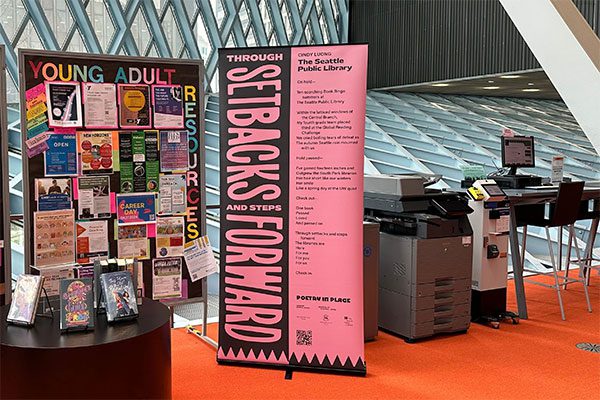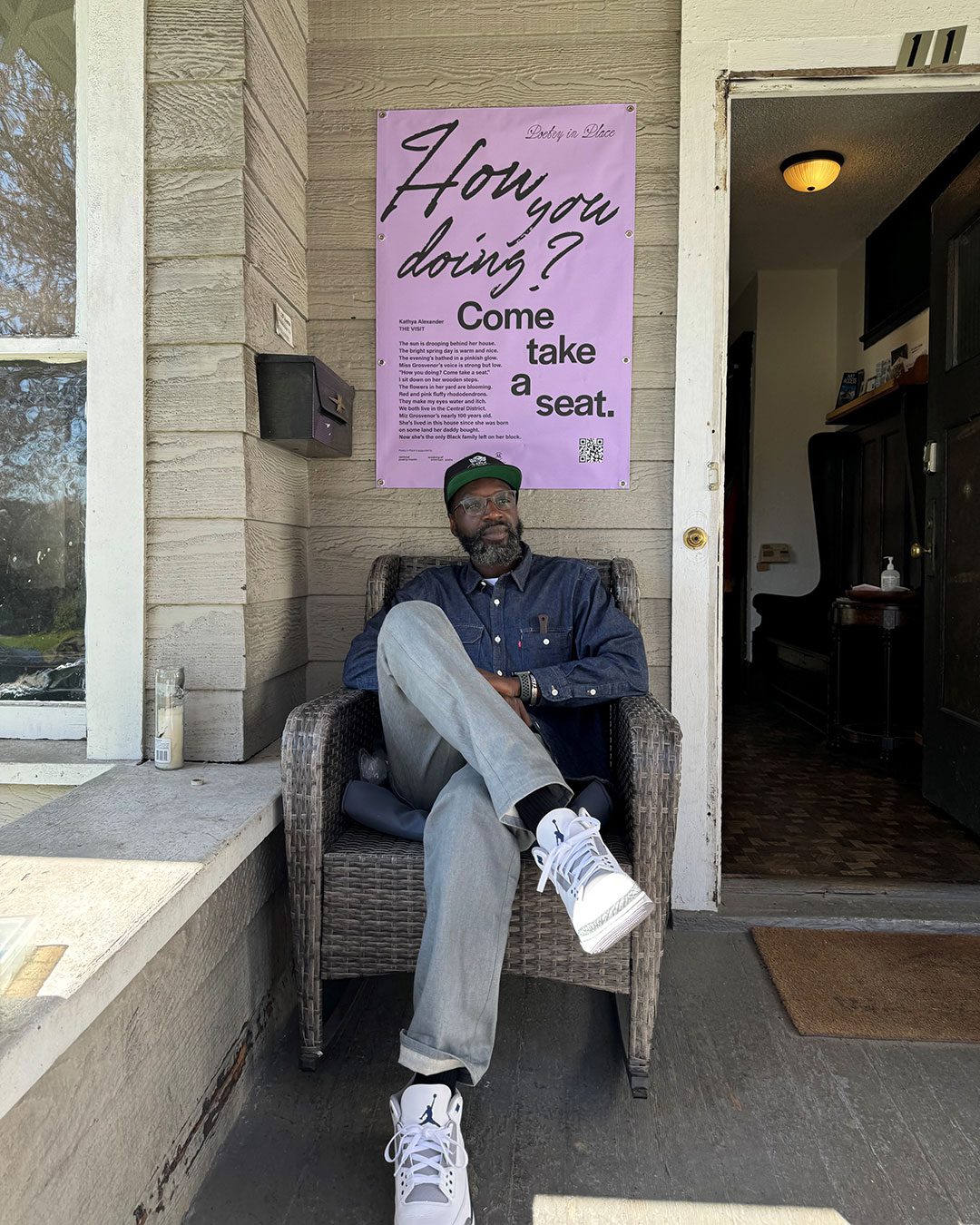
Last year Seattle began celebrating Indigenous Peoples’ Day to celebrate the cultures and values of Indigenous Peoples in our region. In addition to celebrating this day, ARTS is highlighting three public artworks in our collection that honor our region’s rich culture and history. Seattle’s public art program expands the public experience with visual art and enables people to better understand their communities and individuals. Take a moment to visit and enjoy these artworks when you get a chance.
A Salish Welcome, Marvin Oliver
 In Ballard, A Salish Welcome (2010) greets visitors at the gathering and viewing section of the Salmon Bay Natural Area. Completed in June 2010, artist Marvin Oliver constructed the 16-foot-tall free-standing sculpture out of bronze, powder coated aluminum, powder coated steel, concrete and glass.
In Ballard, A Salish Welcome (2010) greets visitors at the gathering and viewing section of the Salmon Bay Natural Area. Completed in June 2010, artist Marvin Oliver constructed the 16-foot-tall free-standing sculpture out of bronze, powder coated aluminum, powder coated steel, concrete and glass.
Highlighting Seattle Public Utility’s work to restore, protect and preserve Seattle’s vital salmon habitat, the cast bronze figure draped in a Salish ceremonial robe raises a four-foot diameter aluminum disk featuring two laser-cut adult salmon circling four glass salmon eggs. The base of the sculpture is covered in steel plates with images of mature salmon facing upstream from Salmon Bay and salmon fry pointing towards Puget Sound.
“A Salish Welcome honors the local Salish people and celebrates the abundant and vital life on this ecological waterway,” says Oliver in his artist statement. “The monumental Salish figure in ceremonial robe greets us and reminds us to preserve, protect and promote this evolving, living landscape for new generations and man alike.”
The sculpture was funded by Seattle Public Utilities 1% for Art funds and Department of Neighborhoods Neighborhood Matching Funds.
Day/Night, Edgar Heap of Birds
 Located next to the bust of Chief Seattle in Pioneer Square, Day/Night is crafted out of porcelain enamel on two steel panels by artist Edgar Heap of Birds. Chief Seattle’s speech during treaty negotiations in 1854 reflects strongly on the relationship between people and the earth. Written in Lushootseed (front) and English (back), Day/Night conveys, in a contemporary sense, the feelings and thoughts that the Chief had for the very land that the statue sits upon. One panel reads: “Far away brothers and sisters, we still remember you” while the other one reads: “Chief Seattle, now the streets are our home.”
Located next to the bust of Chief Seattle in Pioneer Square, Day/Night is crafted out of porcelain enamel on two steel panels by artist Edgar Heap of Birds. Chief Seattle’s speech during treaty negotiations in 1854 reflects strongly on the relationship between people and the earth. Written in Lushootseed (front) and English (back), Day/Night conveys, in a contemporary sense, the feelings and thoughts that the Chief had for the very land that the statue sits upon. One panel reads: “Far away brothers and sisters, we still remember you” while the other one reads: “Chief Seattle, now the streets are our home.”
“The porcelain panels seek to proclaim that for many transient inter-tribal native people the streets of Seattle are home,” says Heap of Birds. “Secondly it is declared that although these tribal citizens have sought refuge in the urban centers which have sprung up on Indian Territory around them, the far away rural tribal communities from which they originate hold each and everyone’s memory in close and high regard.”
Originally commissioned as a temporary artwork by the Seattle Arts Commission for “In Public, 1991”, Day/Night was on display for an extended number of years before being declared permanent. Day/Night was funded by private donors and the City of Seattle.
Hatchcovers, Nathan Jackson
 Alaskan artist Nathan Jackson was commissioned in 1976 as a part of the hatchcovers project, where artist designed hatchcovers (manhole covers) to replace the aging hatchcovers downtown. Jackson’s design features a Tlingit orca whale relief which was originally carved in wood and later cast in iron.
Alaskan artist Nathan Jackson was commissioned in 1976 as a part of the hatchcovers project, where artist designed hatchcovers (manhole covers) to replace the aging hatchcovers downtown. Jackson’s design features a Tlingit orca whale relief which was originally carved in wood and later cast in iron.
There are 32 of these hatch covers scattered throughout Seattle. Jackson’s hatchcovers were funded by Seattle City Light 1% for Art funds.


